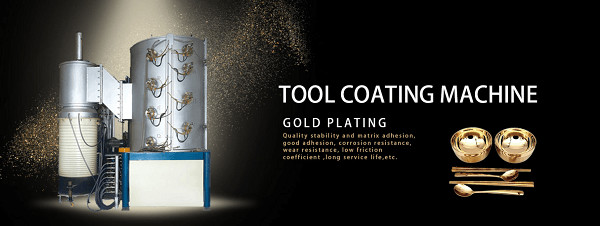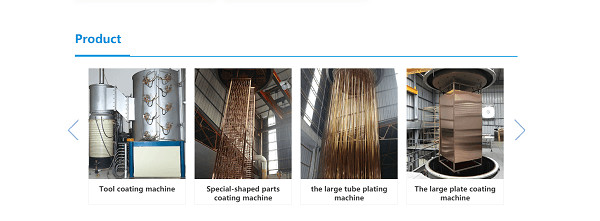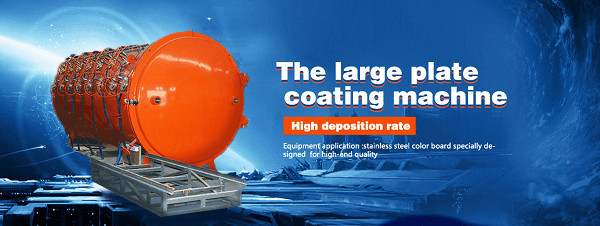Atomic layer deposition of aluminum oxide coating enhances the electrochemical cycling stability of porous vanadium pentoxide thin films
Recently, the method of surface modification by coating oxide has been successfully applied to improve the capacity stability of lithium ion battery cathode materials. In this article, we have prepared a porous V2O5 film by V2O5 sol combined with a pulling method, and coated it with an Al2O3 atomic layer by atomic layer deposition. The electrochemical properties of the porous V2O5 film are affected by the thickness of the coating layer. We have studied the modification effects under different film thicknesses. The results show that the ALD coating of Al2O3 atomic layers with different thicknesses improves the cycle stability of lithium-ion batteries, and the samples after 10 ALD coating cycles show the best modification effect. On this basis, we discussed and explored the mechanism of increased capacity and stability by coating Al2O3.
The society's demand for new energy is increasing, and green energy is receiving more and more attention. Among them, lithium-ion batteries have the characteristics of high energy density, good safety, low pollution, and no memory effect, and have become a global research hotspot. Various forms of lithium-ion batteries are developing rapidly. With the rapid development of electronic and micro-devices, chips, artificial transplanted organs, and microelectronic mechanical systems are in urgent need of micro-energy sources with high energy density and various shapes. Therefore, thin-film lithium batteries have also received attention. The development of lithium-ion batteries strongly depends on electrode materials, especially cathode materials. Therefore, research on cathode materials with high energy density and long cycle life is one of the focus of future development. V2O5 has become one of the most promising cathode materials with its extremely high theoretical specific capacity of 442 mAh/g and a layered structure that can hold up to 3 mol of lithium ions.
However, the V2O5 material prepared by the traditional method has low conductivity, and the phenomenon of structural collapse occurs during multiple charge and discharge processes, resulting in a decrease in specific capacity. In recent years, researchers have devoted themselves to the preparation of nano-sized V2O5, such as nanowires, nanotubes, nanosheets, and nanoporous films. Nanomaterials have a large surface area and a slender nanoframework, which greatly strengthens the active material and electrolyte. Contact, shorten the diffusion distance of electrons and ions. The amorphous structure of nanomaterials provides a large number of vacancies for ion implantation, which can increase the insertion capacity. For nanomaterials, as the specific surface area increases, many phenomena are different from bulk materials, which effectively suppress undesired phase transitions and improve the cycle stability of the materials.
In the existing research, improving the cycle stability of lithium-ion batteries under the premise of ensuring high energy density has always been the direction of everyone's efforts. The loss of battery capacity during the cycle is mainly caused by two reasons. On the one hand, the electrode is dissolved in the electrolyte, on the other hand, the continuous insertion and extraction of lithium ions leads to the destruction of the electrode material structure. In order to solve these two problems, we often use oxides to coat the surface of the electrode. They can modify the surface chemistry of the thin film electrode and also enhance the strength of the structure. Nano-scale coatings are usually applied to the electrode after dispersion in a solution, but for porous materials, it is very difficult to do so due to the presence of capillary action. Therefore, for high-porosity materials, the vacuum technology network (http://www.chvacuum.com/) believes that atomic layer deposition (ALD) is a good alternative. The reaction process is in the gas phase, and the surface of the porous material can be covered with a coating layer with a controllable thickness only by changing the number of deposition cycles. In this paper, the ALD device is used to coat the Al2O3 atomic layer of different thickness on the thin film electrode. Compared with the undeposited case, the electrochemical cycle stability of the V2O5 thin film is significantly improved.
1. Experiment
vacuum coating machine,pvd coating machine,pvd vacuum machine,vacuum ion coating machine,multi-arc ion coating machine
1.1, sample preparation
In this experiment, domestic V2O5 powder (high purity, purity ≥ 99.99%), isopropanol (IP, (CH3) 2CHOH, analytically pure, purity ≥ 99.7%), benzyl alcohol (BA, C6H5CH2OH, analytically pure, purity ≥ 99.0%) mixed in a certain molar ratio, stirred for a certain period of time in a normal temperature environment, heated and stirred in an oil bath environment of 110 ℃ for 4 h. After the end, the solution was cooled to room temperature, and vacuum filtration was performed to obtain a V2O5 sol. The obtained sol was distilled to 1/3 of the original volume, and then centrifuged at a speed of 2500 r/min for 15 minutes to remove particles and macromolecules in the sol, which was reserved for future use. The conductive glass plated with ITO (In2O3:SnO2) is selected as the substrate, and after cleaning, the prepared V2O5 concentrated sol is used in an environment full of saturated acetone vapor to pull and coat the film. The prepared film uses organic solvents with low surface tension, acetone and cyclohexane, for solvent replacement, and vacuum drying at room temperature to obtain a V2O5 film. The prepared film was heat-treated in an air atmosphere at a heating rate of 5 ℃/min, and kept at 300 ℃ for 3 h. After cooling to room temperature, undeposited sample A was obtained, and 5, 10, and 20 Al2O3 atomic layers were respectively plated at 100 ℃ using ALD equipment to obtain samples B, C, and D.
1.2, experimental equipment and test equipment
The electrochemical test of the thin film samples is carried out in a three-electrode test device. The working electrode (WE) is a thin film plated on an ITO (In2O3:SnO2) conductive glass substrate. The counter electrode (CE) and the reference electrode (RE) are both lithium The electrolyte uses a mixed solution of ethylene carbonate (EC), ethyl methyl carbonate (EMC) and diethyl carbonate (DEC) containing LiPF6 (1M), where EC:EMC:DEC=1:1:1( Volume ratio). The reaction electrode area of the film is 2.5 cm× 1.5 cm.
The electrochemical performance test was carried out on the CHI660C (Shanghai Chenhua Instrument Co., Ltd.) electrochemical workstation. Constant current charging and discharging are carried out on the blue electric test system (CT2011A), all electrochemical tests are carried out in a glove box filled with argon, and the content of O2 and H2O is less than 1 ppm.
vacuum coating machine,pvd coating machine,pvd vacuum machine,vacuum ion coating machine,multi-arc ion coating machine
2. Characterization
2.1, appearance
Atomic layer deposition of aluminum oxide coating enhances the electrochemical cycling stability of porous vanadium pentoxide thin films
Atomic layer deposition of aluminum oxide coating enhances the electrochemical cycling stability of porous vanadium pentoxide thin films
2.2, the electrochemical cycle stability of the film
vacuum coating machine,pvd coating machine,pvd vacuum machine,vacuum ion coating machine,multi-arc ion coating machine
In the repeated embedding and extraction process, the Al2O3 atomic layer on the surface of the V2O5 film can prevent the dissolution of the V2O5 electrode in the electrolyte by reducing the direct contact between the electrode and the electrolyte. At the same time, the Al2O3 atomic layer also acts as a space between the nanoparticles in the film. Good medium for contact. However, the initial capacity of the samples has decreased. This is because the existence of the Al2O3 atomic layer blocks the contact between the active material and the electrolyte, thereby hindering the insertion and extraction of lithium ions to a certain extent. Sample D has a higher capacity retention than sample C However, its initial capacity is greatly limited due to the thick coating layer.
Atomic layer deposition of aluminum oxide coating enhances the electrochemical cycling stability of porous vanadium pentoxide thin films
3. Discussion and conclusion
The improvement of the cycle stability of the V2O5 film after Al2O3 atomic layer deposition is mainly due to the enhancement of the surface chemical properties and the enhancement of the mechanical structure of the film. According to literature, electrode dissolution and changes in the structure of nanomaterials during the insertion and extraction of lithium ions are the two main causes of capacity degradation. The reason why the nanostructured film can exhibit high capacitance is because its surface has a large contact area with the electrolyte, which provides a sufficient reaction area for the insertion of lithium ions. However, during the cycle, a large surface area also means that more electrode materials will be dissolved in the electrolyte, which accelerates the loss of active materials, and thus the capacitance decreases. On the other hand, after lithium ions are intercalated, the acceptor film will experience a sudden increase in voltage, which will bring a lot of mechanical stress and easily destroy the integrity of the film. For porous films, interconnected nanoparticles undergo repeated processes. When the voltage changes, they will gradually lose contact with each other. As a result, the structural network is destroyed and capacity degradation occurs. The coated atomic layer can protect the active material layer, reduce the dissolution of the electrode in the electrolyte, and provide a kind of adhesion to weaken the damage to the structure caused by the stress caused by the voltage surge, so the atomic layer deposition method is used as a way to increase the film electrode The method of mechanical strength is efficient and feasible. The role of the coating layer as a protective layer to protect the integrity of the electrode surface has been widely recognized, but the argument for adhesion has not been proven.
This article is about the deposition of Al2O3 atomic layer on the V2O5 porous film prepared by the sol-gel method to improve its cycle stability. The undeposited film has the highest initial discharge capacity, but it decays severely after 50 cycles. After Al2O3 atomic layer deposition of different thicknesses, the cycle stability of the V2O5 film is improved. The 10-layer deposited film has good cycle stability. Its initial capacity is 351.4 mAh/g. After 50 cycles, the capacity is still 269.6 mAh/g, and the capacity retention rate is 76.7%. The improvement of cycle stability of the V2O5 film after Al2O3 deposition is attributed to the inactive nature of the Al2O3 layer. It not only protects the electrode and reduces its dissolution in the electrolyte, but also the adhesion of the deposited layer also makes the V2O5 film mechanical The structure is more stable.
vacuum coating machine,pvd coating machine,pvd vacuum machine,vacuum ion coating machine,multi-arc ion coating machine
Founded in 2015,Zunhua Baorui Titanium Equipment Co.,Ltd. is a manufacturer specializing in pvd vacuum ion coating equipment. The company’s products mainly include large plate coating machine, large tube collating machine, tool coating machine and LOW-E glass production line. Mr.Wang baijiang ,general manager of the company ,has been engaged in vacuum coating industry for more than 30 years. He continuously improve production technology, improve product performance and devote himself to provide customers with better product experience and higher production efficiency.





